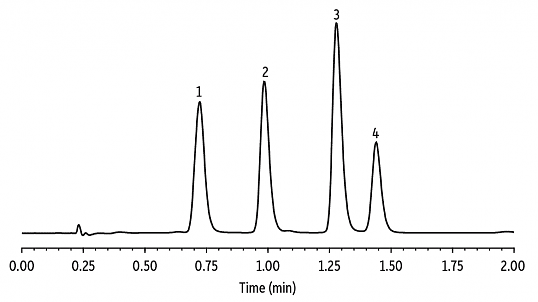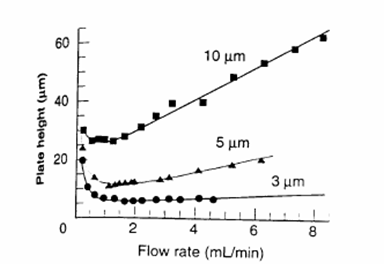Chromatographic Resolution
- Page ID
- 283927
\( \newcommand{\vecs}[1]{\overset { \scriptstyle \rightharpoonup} {\mathbf{#1}} } \) \( \newcommand{\vecd}[1]{\overset{-\!-\!\rightharpoonup}{\vphantom{a}\smash {#1}}} \)\(\newcommand{\id}{\mathrm{id}}\) \( \newcommand{\Span}{\mathrm{span}}\) \( \newcommand{\kernel}{\mathrm{null}\,}\) \( \newcommand{\range}{\mathrm{range}\,}\) \( \newcommand{\RealPart}{\mathrm{Re}}\) \( \newcommand{\ImaginaryPart}{\mathrm{Im}}\) \( \newcommand{\Argument}{\mathrm{Arg}}\) \( \newcommand{\norm}[1]{\| #1 \|}\) \( \newcommand{\inner}[2]{\langle #1, #2 \rangle}\) \( \newcommand{\Span}{\mathrm{span}}\) \(\newcommand{\id}{\mathrm{id}}\) \( \newcommand{\Span}{\mathrm{span}}\) \( \newcommand{\kernel}{\mathrm{null}\,}\) \( \newcommand{\range}{\mathrm{range}\,}\) \( \newcommand{\RealPart}{\mathrm{Re}}\) \( \newcommand{\ImaginaryPart}{\mathrm{Im}}\) \( \newcommand{\Argument}{\mathrm{Arg}}\) \( \newcommand{\norm}[1]{\| #1 \|}\) \( \newcommand{\inner}[2]{\langle #1, #2 \rangle}\) \( \newcommand{\Span}{\mathrm{span}}\)\(\newcommand{\AA}{\unicode[.8,0]{x212B}}\)
- The following data were obtained for four compounds separated on a 20-m capillary column.
compound
tr (min)
w (min)
A
8.04
0.15
B
8.26
0.15
C
8.43
0.16
Calculate the resolution and relative retention values for each pair of adjacent compounds. The retention time for an unretained solute is 1.19 min.
- Using the chromatogram shown below, calculate the retention factor for each peak 1-4 and find the resolution and relative retention for each pair of adjacent compounds. (Hint: use a ruler!)

- Using the partial chromatogram below, determine the resolution between the two solute bands. (Hint: you’ll need a ruler!)

- Suppose you want to increase the resolution between the two components to 1.5.
- What difference in retention times is necessary to achieve this resolution assuming the peak widths do not change?
- If the difference between the retention times remains the same, how would the peak widths have to change?
- What difference in retention times is necessary to achieve this resolution assuming the peak widths do not change?
- The following data were obtained for four compounds separated on a 20-m capillary column.
compound
tr (min)
w (min)
A
8.04
0.15
B
8.26
0.15
C
8.43
0.16
- Calculate the number of theoretical plates for each compound and the average number of theoretical plates for the column.
- Calculate the average height of a theoretical plate.
- Calculate the number of theoretical plates for each compound and the average number of theoretical plates for the column.
- The partial chromatogram below was obtained on a 2-m column with tm= 50 s. Suppose you want to increase the resolution between the two components to 1.5. Without changing the height of a theoretical plate, what length column do you need? What height of a theoretical plate do you need to achieve a resolution of 1.5 without increasing the column’s length?

- The van Deemter plots shown below correspond to packed columns that are identical except for the size of the stationary phase particles (3, 5, and 10 μm).

- Which column would show the best resolution for two similar solutes? What aspect(s) of the graph above allowed you to make this decision?
- Use the three terms in the van Deemter equation to explain the differences in these plots.
- Which column would show the best resolution for two similar solutes? What aspect(s) of the graph above allowed you to make this decision?
Contributors and Attributions
- Molly McGuire, Bucknell University (mmcguire@bucknell.edu)
- Sourced from the Analytical Sciences Digital Library


